Introduction
Even though pandemic regulations have eased globally, cloth masks continue to be popular. They’re not just for protection anymore — they’ve become a fashion statement, a branding tool, and even a way to express personal values or humor.
Whether it’s a company offering custom-branded masks to employees or individuals purchasing unique designs for everyday use, the demand persists — especially in niche markets.
Table of Contents
The best part? You don’t need to invest in inventory or expensive printing machines. With Print-on-Demand (POD), you can design and sell personalized face masks from the comfort of your home, without worrying about manufacturing or fulfillment.
This guide will walk you through every step — from choosing a POD platform to designing masks, launching your online store, marketing effectively, and ensuring long-term success.
Choosing the Right POD Platform for Cloth Masks
Your POD platform is your back-end partner. It handles everything from printing to packaging and shipping. Here’s how to select the best one based on your needs:
SwagifyPOD – Best for Branding Control
If you’re building a brand and want full customization, Fourthwall allows you to add custom branding, packaging inserts, and even your domain name. It’s perfect for influencers and brands that want a white-label experience.
Printify – Best for Flexibility and Cost
Printify connects you with multiple suppliers globally. You can choose your preferred supplier based on price, location, and shipping speed. It’s ideal if you’re starting out and want affordable options and easy integration with Shopify, Etsy, or WooCommerce.
SPOD – Best for Speed and Quality
SPOD is known for fulfilling orders within 48 hours, offering high-quality breathable cotton masks. It’s great for businesses that prioritize fast delivery and reliable quality.
Redbubble – Best for Beginners and Artists
Redbubble is a marketplace where you upload your design and the platform does the rest. No website, no store setup — just royalties on every sale. However, you have limited control over customer experience and profit margins.
Expert Tip: If you want higher profit margins and brand control, combine Printify with your own Shopify store.
How to Design Personalized Cloth Masks that Sell
Design is everything. A comfortable, stylish mask will outsell a plain or generic one every time. Here’s how to make your mask stand out.
Choose Comfortable, Durable Materials
- Recommended fabric: Cotton-polyester blend for softness and durability.
- Advanced option: Look for antimicrobial-treated fabric (especially for B2B or health-conscious buyers).
- Ensure masks are breathable and can be worn for long periods comfortably
Add Functional Features
- Adjustable ear loops
- Flexible nose wires
- Pleated or contoured design for better fi
These features aren’t just functional — they help justify higher pricing.
Design Ideas That Work
- Niche targeting: Create collections for pet lovers, teachers, gamers, etc
- Business branding: Allow businesses to add logos or slogans for employee uniforms.
- Cause-based designs: Offer a portion of profits to a cause (e.g., cancer awareness).
- Seasonal trends: Think Halloween masks, Christmas prints, Valentine’s themes, etc.
- Pop culture: Stay within copyright-safe zones and use trends as inspiration.
Tools to Design Like a Pro
- Canva: User-friendly tool with templates and graphics.
- Photopea: Free alternative to Photoshop for more advanced edits.
- Placeit: For mask mockups and marketing visuals.
Pro Tip: Keep key elements centered in a 6×3 inch space to ensure visibility and prevent cropping in print.
Choosing the Right Clothing Material for Personalized Cloth Masks
| Fabric Type | Properties | Best Use in Mask | Suitability for Personalization |
|---|---|---|---|
| Cotton (Tightly Woven) | Breathable, washable, good filtration (e.g. quilting cotton) | Outer and inner layers of cloth masks | Excellent – easily printable or embroidable |
| Cotton Blend (e.g. Poly-Cotton) | Durable, holds shape well, slightly less breathable than 100% cotton | Reusable everyday masks | Good – supports screen printing and heat transfer vinyl |
| Silk | Naturally electrostatic, breathable, lightweight | Inner layer to enhance filtration | Moderate – delicate; may not suit all printing methods |
| Polyester | Strong, quick-drying, less breathable than cotton | Outer decorative layer | Excellent – ideal for sublimation printing |
| Nylon | Stretchable, lightweight, not as breathable | Ear loops or filter pockets | Good – flexible for screen printing |
| Spandex/Lycra Blend | Elastic, form-fitting, soft | Inner lining or ear loops | Fair – tough to print; better for embroidered logos |
| Flannel (Brushed Cotton) | Soft, good filtration, warm | Inner layer for comfort in colder climates | Good – can be printed or stitched |
| Non-woven Polypropylene | Water-resistant, used in surgical masks | Middle filter layer | Poor – not ideal for personalization |
| Bamboo Fabric | Soft, antibacterial, eco-friendly | Inner layer or entire mask | Good – screen printing and embroidery possible |
| Linen | Breathable but loosely woven | Decorative outer layer | Fair – supports basic printing |
The material of your cloth mask directly impacts its comfort, durability, print quality, and breathability. Choosing the right fabric not only improves customer satisfaction but also ensures your designs look professional and last longer after multiple washes.
1. Cotton (100%)
- Pros: Soft, breathable, skin-friendly, hypoallergenic.
- Cons: Can shrink after washing, lower elasticity.
- Best for: Casual wear masks, sensitive skin customers.
2. Cotton-Polyester Blend
- Pros: Stronger than pure cotton, holds shape well, reduces shrinkage, better for sublimation printing.
- Cons: Slightly less breathable than 100% cotton.
- Best for: Mass production, vibrant designs, all-day wear.
Pro Tip: A 60% cotton and 40% polyester blend is a popular balance for comfort and durability in POD.
3. Polyester (100%)
- Pros: Excellent for sublimation printing (vivid colors), lightweight, wrinkle-resistant.
- Cons: Not as breathable, can trap heat and moisture.
- Best for: Fashion-focused masks with bold, full-color prints.
4. Bamboo Fabric
- Pros: Naturally antibacterial, moisture-wicking, eco-friendly.
- Cons: More expensive, not supported by all POD platforms.
- Best for: Eco-conscious brands, premium product lines.
5. Spandex or Lycra Blends
- Pros: Adds stretch, snug fit, flexible.
- Cons: Can lose shape over time, harder to print on.
- Best for: Athletic or fitted mask styles.
3. Setting Up Your Online Store
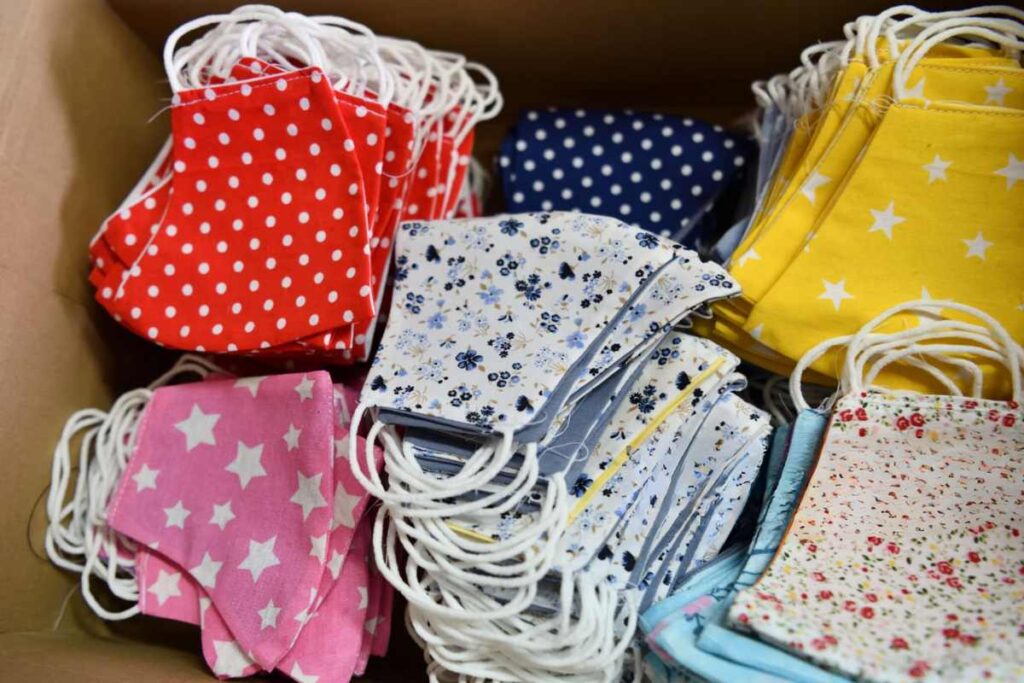
Depending on your tech skills and goals, there are several ways to sell:
Shopify – Full Brand Control
Build a fully branded store using Shopify and connect it with Printify or Fourthwall. This option offers great flexibility and long-term scalability.
Etsy – Easy Start with Built-in Traffic
If you want to tap into an existing customer base, Etsy is a great choice. It supports handmade and personalized products, making it perfect for custom masks.
WooCommerce – Control Without Monthly Fees
If you already have a WordPress site, WooCommerce is a good option. It’s open-source and free, though it requires more hands-on setup.
Redbubble – No Store Required
Just upload your artwork, and Redbubble takes care of everything else. Ideal for passive income and those new to eCommerce.
Optimize Your Product Listings
- Include keywords like: “custom cloth face mask,” “personalized fabric mask,” “adjustable washable mask.”
- Write compelling product descriptions: Talk about fabric quality, comfort, and personalization options.
- Use lifestyle photos that show your masks in real-world settings.
Tip: Include a sizing guide to reduce returns and increase customer satisfaction.
4. Pricing for Profit: How to Stay Competitive and Make Money
| Pricing Element | Details | Recommended Range | Profit Strategy |
|---|
| Cost of Materials | Fabric, thread, elastic, filter, printing/vinyl/sublimation costs | $0.80 – $2.50 per mask | Buy in bulk, use cost-effective yet safe materials |
| Labor Cost | Time spent on sewing, customization, and packing | $1.00 – $3.00 per mask | Streamline process, use templates or semi-automated tools |
| Customization Cost | Printing, embroidery, or heat transfer expenses | $0.50 – $2.00 per mask | Offer tiered pricing (basic to premium customization) |
| Packaging | Branded or eco-friendly packaging | $0.20 – $0.60 per unit | Use minimal, reusable, or branded packaging for perceived value |
| Shipping | Domestic shipping, including tracking | $0.50 – $2.00 (bulk lowers cost) | Offer free shipping threshold to encourage bulk purchases |
| Suggested Retail Price | Final price for customers, including customization | $7.00 – $15.00 per mask | Price based on design uniqueness, not just cost |
| Wholesale Price | For bulk/custom orders (e.g., businesses, events) | $4.00 – $7.00 per unit | Include volume discounts; bundle masks with matching accessories |
| Profit Margin | Target profit after all costs | 30% – 60% | Focus on value-added branding and upselling |
| Market Positioning | Low-cost, mid-tier, or premium branding strategy | Niche vs. Mass Market | Define your niche (eco-friendly, luxury, funny, etc.) |
| Competitive Edge Tips | Bundle offers, free filters, seasonal themes | – | Offer exclusives, fast turnaround, and custom designs |
Know Your Numbers
- Base production cost: $4.91 – $12.95 depending on platform
- Retail price: $14.95 – $20.00+
- Profit margin: Aim for at least 50%
Offer Strategic Pricing Options
- Bundle deals: “Buy 2, get 1 free” or “Family pack – Set of 4”
- Volume discounts: Encourage businesses to place bulk orders
- Free shipping thresholds: E.g., “Free shipping on orders over $30”
Tip: Platforms like Printify Premium offer bulk pricing — ideal for scaling.
5. Ensure Quality and Stay Legally Compliant
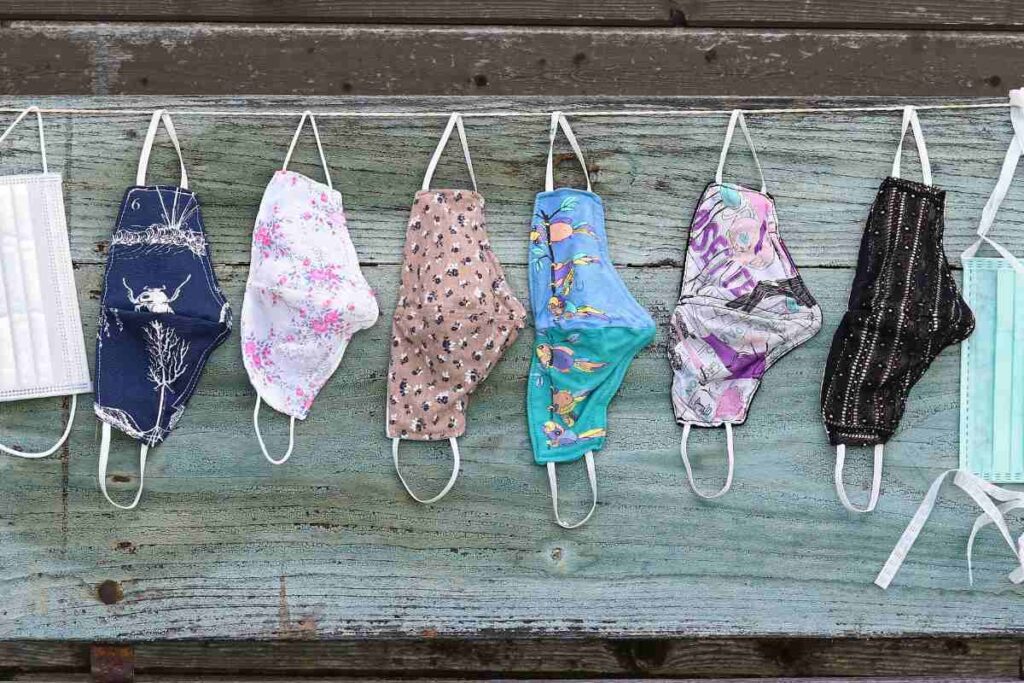
Cloth masks must be comfortable, safe, and compliant with regulations.
Quality Assurance Checklist
- Check stitching quality
- Test print alignment
- Wash-test your mask design for color fading
- Ensure adjustable features function well
Legal Compliance
- Do not market your mask as “medical-grade” unless certified
- Use FDA/FTC-compliant language like “non-medical, reusable cloth face covering”
- Include care instructions such as: “Machine wash in cold water, tumble dry low”
Tip: Include a disclaimer in your product page about non-medical usage.
6. Effective Marketing Strategies for Custom Cloth Masks
| Marketing Channel | Target Audience | Strategy | Key Benefit |
|---|
| Social Media (Instagram, Facebook, TikTok) | Individuals, fashion-conscious users, small groups | Showcase creative designs, run giveaways, partner with influencers | High visibility, viral potential |
| E-commerce Platforms (Etsy, Amazon, Shopify) | Online shoppers looking for personalized items | Optimize listings with keywords, great visuals, and reviews | Access to large, ready-to-buy customer base |
| Email Marketing | Past buyers, interested subscribers | Send promotions, new design alerts, and limited-time offers | Builds loyalty and drives repeat sales |
| Corporate/Bulk Orders | Businesses, schools, event organizers | Offer branded mask packages and quantity discounts | Higher volume sales in fewer transactions |
| SEO & Blogging | Health-conscious readers, gift buyers | Write blogs on “best custom masks,” “how to design your own mask,” etc. | Improves Google visibility and organic traffic |
| Influencer/UGC Campaigns | Niche communities, younger demographics | Encourage customers to share photos wearing your masks (UGC) | Builds trust and social proof |
| Google Ads / Facebook Ads | Specific demographics based on interest | Target users by location, interest, age group with high-converting ads | Immediate traffic and conversion |
| Local Events & Pop-Ups | Community members, local shoppers | Set up small booths with try-before-you-buy and customization demos | Builds brand recognition and trust in local market |
| Affiliate Marketing | Bloggers, YouTubers, small websites | Offer commissions for referring mask sales | Expands reach without upfront ad cost |
| Seasonal & Themed Collections | Holiday shoppers, party/event organizers | Launch limited-edition collections for festivals, seasons, causes | Creates urgency and encourages impulse buys |
Social Media Campaigns
- Use Instagram Reels, TikTok, and Pinterest to show off your designs.
- Share behind-the-scenes videos of your design or fulfillment process.
- Highlight customer testimonials and reviews.
Email Marketing
- Collect emails via popups or checkout
- Send newsletters for new collections, holiday releases, or limited editions
- Offer discounts for first-time buyers or referrals
Collaborations and Influencers
- Partner with local influencers or micro-creators
- Offer free masks in exchange for honest reviews and tags
- Use branded hashtags to track user-generated content
Local Wholesale Opportunities
- Pitch to salons, fitness centers, schools, and dental clinics
- Offer custom-branded masks with their logo
- Provide small business packages (e.g., 50–200 masks per order)
Tip: Add a QR code to the packaging that links to your store or loyalty program.
7. Long-Term Growth Tips
To build a lasting business:
- Release seasonal collections (fall/winter themes, back to school, holidays)
- Track your best-selling designs and double down on what works
- Introduce complementary products like matching tote bags, hoodies, or hats
- Build an email list and focus on lifetime customer value
- Ask for customer feedback and apply suggestions quickl
Final Thoughts
Personalized cloth masks may have started as a necessity, but they’ve evolved into a lasting fashion and branding product. With the right tools and strategy, you can build a profitable business from scratch using print-on-demand.
By selecting the right platform, crafting thoughtful designs, setting up a high-converting store, and marketing your products effectively — you’re well on your way to success.
Ready to launch? Start by signing up with SwagifyPOD, create your first design, and get your store online in under a day.

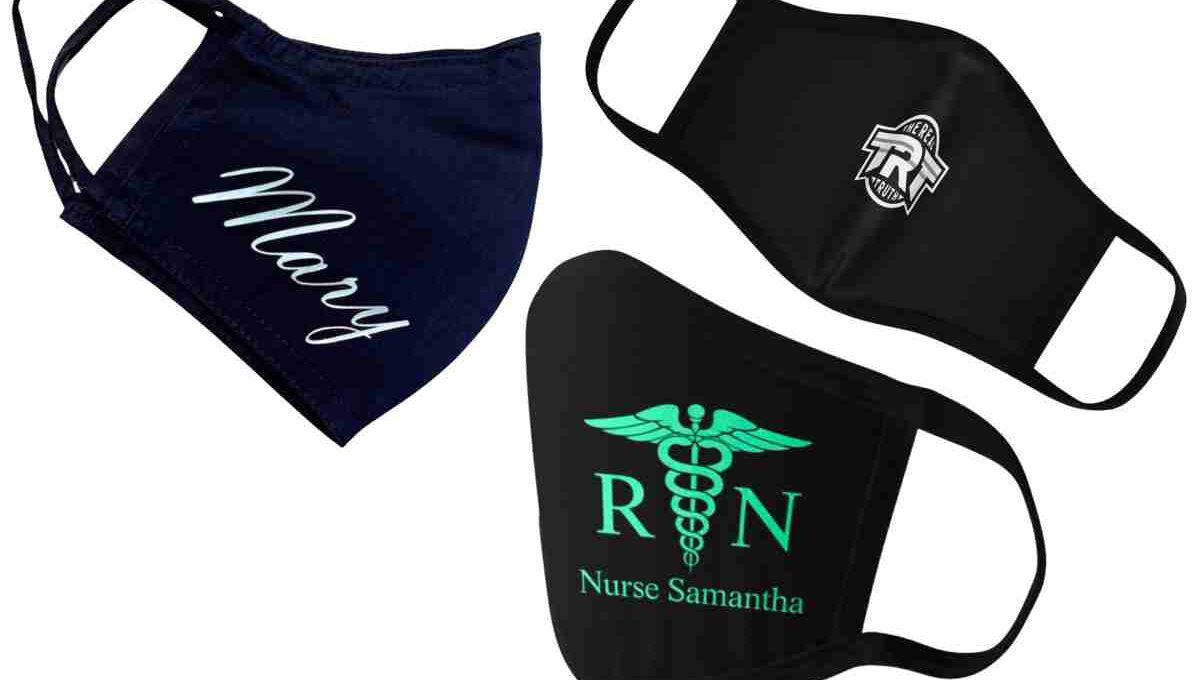
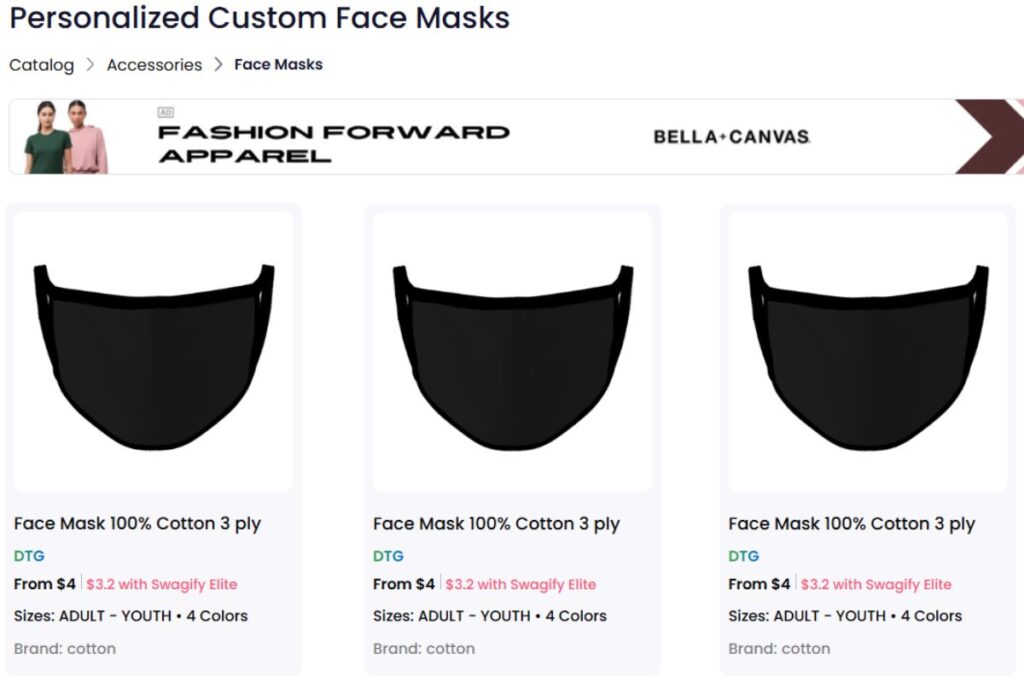
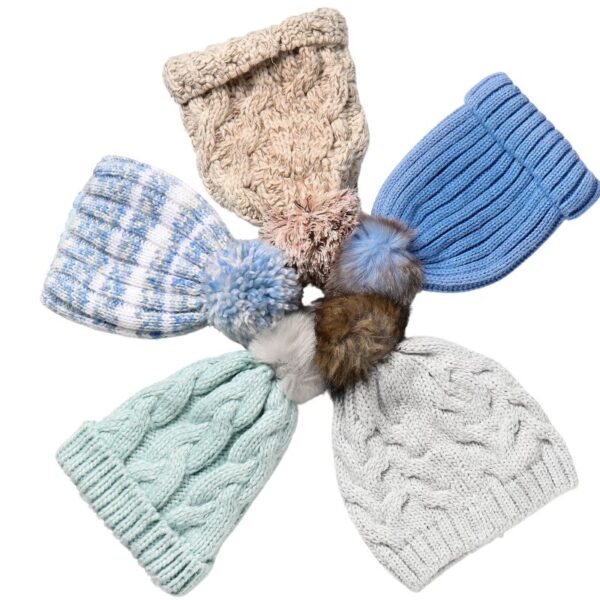
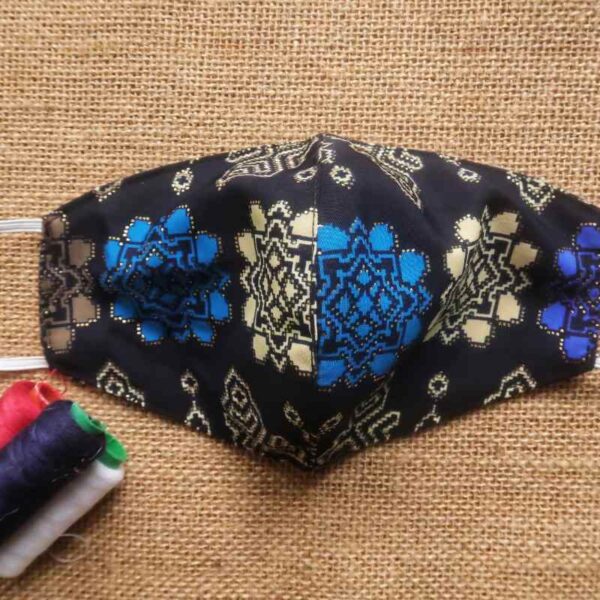
Sign up